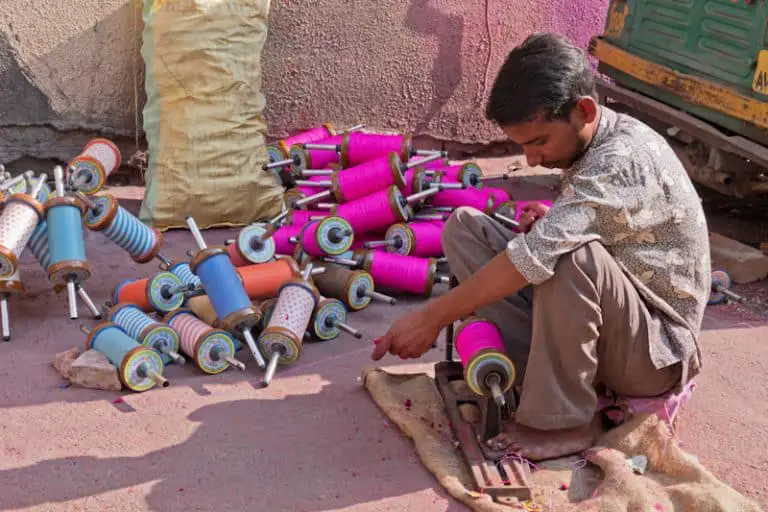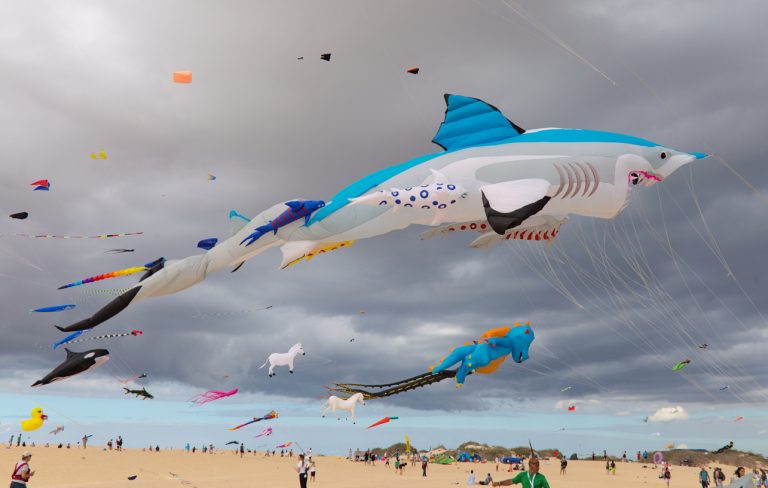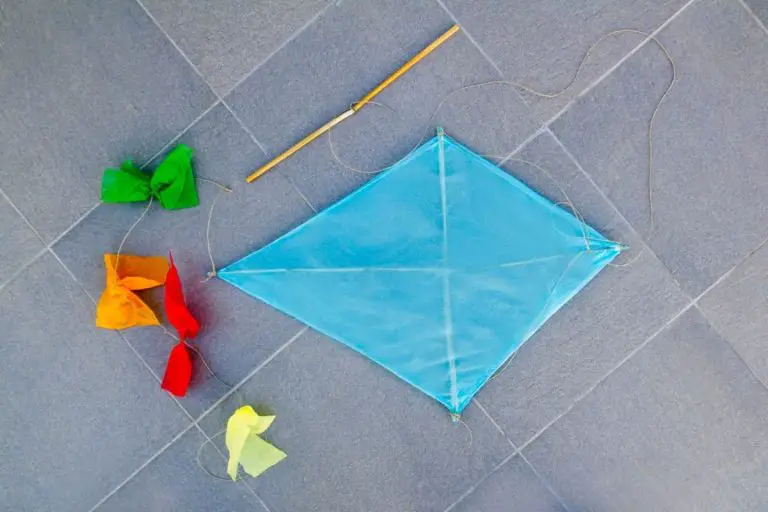The Parts Of The Kite Explained
Are you wondering what the parts of a kite are and how it goes together? Modern technology and materials make it possible to make state-of-the-art kites that fly even in low winds or indoor.
You can find kite lovers amongst kids and adults who use them professionally. But not all kite lovers know kites composition. Although a kite can be more or less complex and have many components, there is at least a minimum structure that has to be there, even for the most simple kite.
At minimum, kites need to have a structure or body (which can have various shapes and forms), a flying line, a tail, and most of them have bridles. But, depending on the kite type, it is not all.
This article will explain all the parts of a kite so you’re well equipped to get into the world of kiting. Let’s dive right in, shall we?

What Are All The Parts Of A Kite?
Here is a summary of all the parts of a kite with an explanation of what they are and their purpose.
The Spine
Each kite has a spine, a line made of hard material that runs from top to bottom. The spine is central to a kite because it is the bar that sustains all the rest. It requires solid and straight materials, but at the same time, it has to be as light as possible such as carbon spars and fiberglass.
The Cross Spar
The cross spar is another bar that runs lengthwise and crosses the spine perpendicularly, it consists of the same materials of the spine, and it has the same diameter so that there is no imbalance once in the air.
In most cases, kites also have two lower spreaders, one running from the spine to the lower edge and one upper spreader that goes from leading edge to leading edge.
The Bridle
The bridle is a set up of string going from the kite to the flying line. The purpose of the bridle is to hold a kite at an angle to the flying line. The objective is to affect the flying ability of the kite or if the kite can fly at all.
In general, the bridle should be at least twice the length of the kite. It has to be that way because kites with a short bridle will not fly, or it will not be a smooth experience if it flies. There are different types of brindle:
- Single Point
- Two Points
- Three Points
- Multi-points
The number of points on a kite depends on the size of the kite. So the more significant is the kite, the more points will be used. Multi-points bridles are necessary to hold the kite stable when encountering strong winds. Otherwise, the kite spine can break, and so the cross spars.
You can adjust most bridles by moving their attachment point and the line from the bottom of the spine to the upper spreader. When putting a brindle in a kite, the part attached near the nose must be shorter than the one attached to the leg.
The Kite Tails
A tail in a kite is there to provide balance. In some cases, it can be a hanging weight, a metal ball on a string, or similar. Tails are essential when flying kites. They are instrumental in pointing a kite in a particular direction, keeping it stable, and adding color and creativity to a kite.
When there is a strong wind, a tail is essential in flying a kite because it can add drag. If a kite flies without a tail, it can spin, bend on one side, or crash. Adding a tail to the bottom of a kite makes it bend downward, allowing it to fly better because of the wind resistance.
Kite tails can vary in length, there isn’t a specific way to calculate how long the tail should be, but one should consider that a very long tail can prevent the kite from taking off, or if it takes off, it would prevent it from staying in the hair.
The Kite Line
When we speak about kites, a line is a string made in cotton or other materials that connects the kite to the operator. In order to make sure that a kite flies well, it is necessary to have a good quality line that is resistant to use and effort.
However, a thicker line can create a lot of resistance, and it can be the main reason kites have a problem getting up in the air or even releasing it at the end of a spool. The material of a kite line has to be of good quality to resist wear, contacts with chemicals, reeling, loss of strength due to knotting, sun, use, and other damages.
For you to increase the performance of a kite line, it is essential to understand the different materials available and the strengths and weaknesses of each. The materials one can use for a kite line are cotton, polyester, and nylon.
Cotton lines are cheaper and are used for children’s kites mainly and lower-price kites. It is strong but also heavy when compared to other lines. Nylon lines are typical for kites and are pretty cheap, while solid and long-lasting at the same time, but one of the disadvantages is that they are prone to tangle.
The other common material used for kite lines is polyester, which is more expensive because it is thinner and lighter.
Kite Frame And Body
The frame consists of the basic structure (spine and spars) united with other sticks or bars called leading edges at the top and trailing edges at the bottom. The basic structure is covered with lightweight materials such as plastic, fabric, or others, which make the framework into a wing.
Therefore, the frame is the thing that gives the shape to a kite and constitutes the kite body with the outer covering. Kites can be flat, boxed, bowed, or air-inflated.
Kite Reel Or Winder
The reel (or winder) is an object that has the purpose of storing the flying line. It can be a simple stick that has the flying line wrapped around it or a more complex device such as a plastic handle with projecting forks to wrap the cord around it. In addition, some winders look like a fishing reel.
It would be best if you always tied the end of the flying line to the winder. Otherwise, it is possible to lose the kite to the wind. Those who want to build a kite themselves can create a cheap reel or winder using toilet rolls or discarded fishing reels.
Those who want to build a more sophisticated kite can use a motorized fishing wheel, mainly if they use a large kite or plan to do kite fishing. You can use this type of solution in case of the necessity to withstand high-speed winds or resist high forces.
It is possible for those looking for inexpensive devices to buy a typical kite reel in any shop that can serve a single-line kite. One can get a reel spending between $20 to $50. A good kite reel can help a person gain more control over the kite and the location one wants to fly a kite, and it is instrumental in bringing down a kite in case of high wind.







